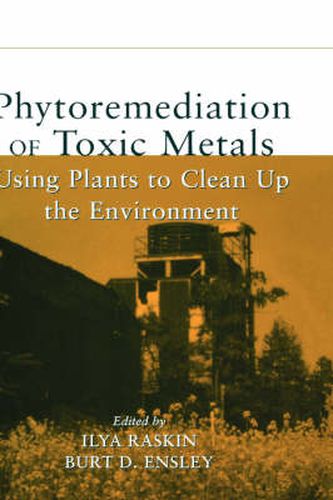Readings Newsletter
Become a Readings Member to make your shopping experience even easier.
Sign in or sign up for free!
You’re not far away from qualifying for FREE standard shipping within Australia
You’ve qualified for FREE standard shipping within Australia
The cart is loading…






An in-depth look at the most promising technology for metal remediation. With current cleanup methodologies offering no real solution to the serious environmental implications of toxic metal contamination, there is a growing need among remediation professionals for effective, affordable, nonpolluting alternatives to energy-intensive engineering processes. This book presents one such promising alternative-the extraordinary new technology of phytoremediation. Through first-rate contributions from the top scientists in the field, Phytoremediation of Toxic Metals surveys worldwide pioneering efforts in the use of plants to treat contamination of such metals as lead, cadmium, chromium, and even radionuclides. The authors explore all major aspects of the technology-how it utilizes the metal-accumulating properties of selected or engineered plants to remove toxic metals from soils and water, how to transfer knowledge from the laboratory to the field, and what methods are most viable for commercial application. Complete, state-of-the-art coverage includes: The economic advantages of plant-based technology Regulatory considerations for future phytoremediation Phytoextraction, phytostabilization, and phytofiltration of toxic metals Photostabilization of metals using hybrid poplar trees Phytovolatilization for the special case of mercury and selenium The biological mechanisms of metal-accumulating plants
$9.00 standard shipping within Australia
FREE standard shipping within Australia for orders over $100.00
Express & International shipping calculated at checkout
An in-depth look at the most promising technology for metal remediation. With current cleanup methodologies offering no real solution to the serious environmental implications of toxic metal contamination, there is a growing need among remediation professionals for effective, affordable, nonpolluting alternatives to energy-intensive engineering processes. This book presents one such promising alternative-the extraordinary new technology of phytoremediation. Through first-rate contributions from the top scientists in the field, Phytoremediation of Toxic Metals surveys worldwide pioneering efforts in the use of plants to treat contamination of such metals as lead, cadmium, chromium, and even radionuclides. The authors explore all major aspects of the technology-how it utilizes the metal-accumulating properties of selected or engineered plants to remove toxic metals from soils and water, how to transfer knowledge from the laboratory to the field, and what methods are most viable for commercial application. Complete, state-of-the-art coverage includes: The economic advantages of plant-based technology Regulatory considerations for future phytoremediation Phytoextraction, phytostabilization, and phytofiltration of toxic metals Photostabilization of metals using hybrid poplar trees Phytovolatilization for the special case of mercury and selenium The biological mechanisms of metal-accumulating plants